The Visual Guide to
Bubaline Reproduction
Obstetrics: Normal Calving
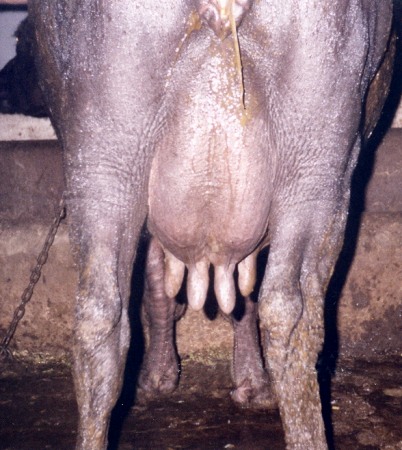
Udder Development.
Enlargement of the udder and distention of the teats during the first stage of parturition. The vulva is enlarged and the pelvic ligaments are relaxed.
Tiwari RP (2008)
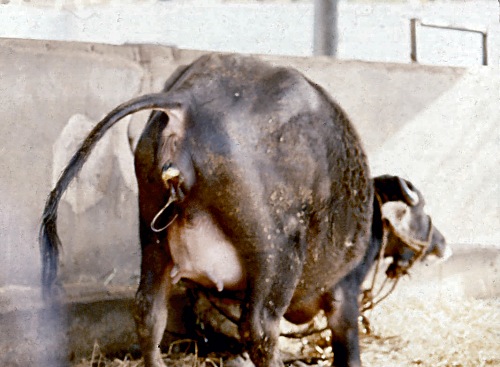
Stage 2 of Labor.
Stage 2 begins when membranes and / or feet appear. Straining begins. Note humped back and elevated tail.
El Naggar MA (2005)
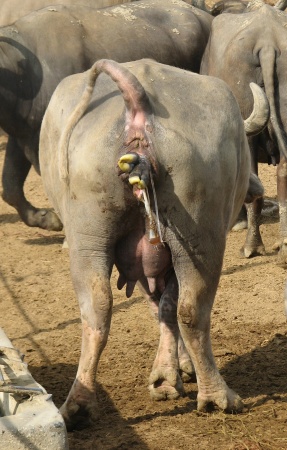
Stage 2 of Labor.
Stage 2 begins when membranes and / or feet appear. A couple of strands of amniotic membranes are hanging from the vulva.
Zambrano-Varon J (2012)
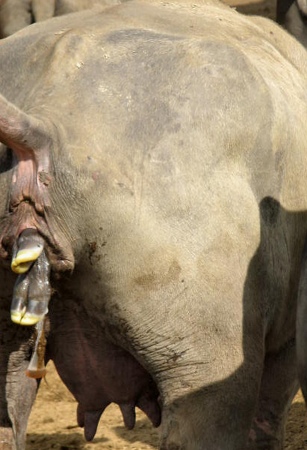
Stage 2 of Labor.
Stage 2 begins when membranes and / or feet appear. Straining begins. Note humped back and elevated tail.
Zambrano-Varon J (2012)
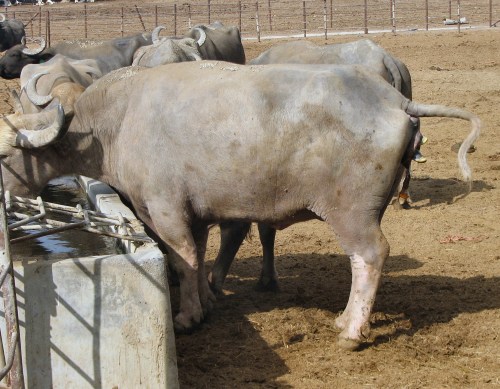
Stage 2 of Labor.
Lateral view. A foot has appeared indicating the onset of Stage 2 and actual delivery. This is the optimal time to move the cow to a designated calving area. Earlier segregation from herd mates causes stress, and will delay the continuation of labor.
Zambrano-Varon J (2012)
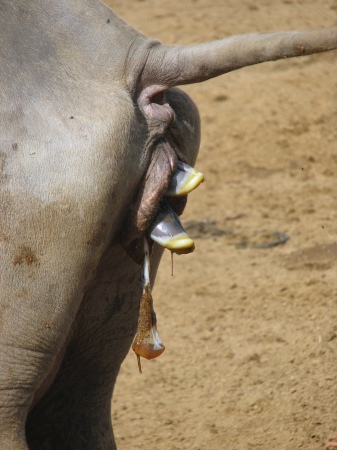
Stage 2 of Labor.
Lateral view. A foot has appeared indicating the onset of Stage 2 and actual delivery. This is the optimal time to move the cow to a designated calving area. Earlier segregation from herd mates causes stress and will delay the continuation of labor.
Zambrano-Varon J (2012)
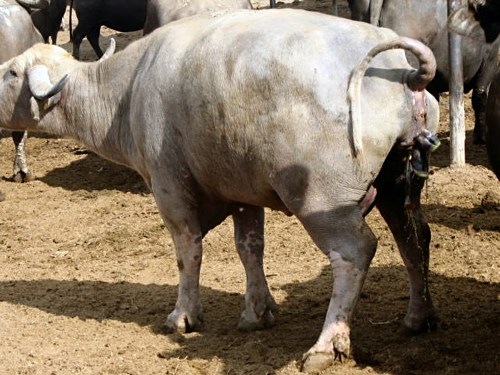
Stage 2 of Active Labor.
Lateral view. A foot has appeared indicating the onset of Stage 2 and actual delivery. The cow is actively straining.
Zambrano-Varon J (2012)
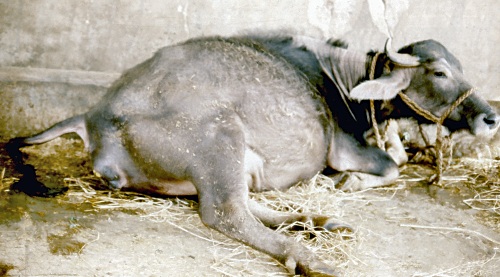
Stage 2 of Labor.
True labor begin when a foot appears and the cow start to strains hard.
El Naggar MA (2005)

True Labor.
True labor begin when a foot appears and the cow start to strains hard. She usually lies down for more effective delivery of the calf.
El Naggar MA (2005)
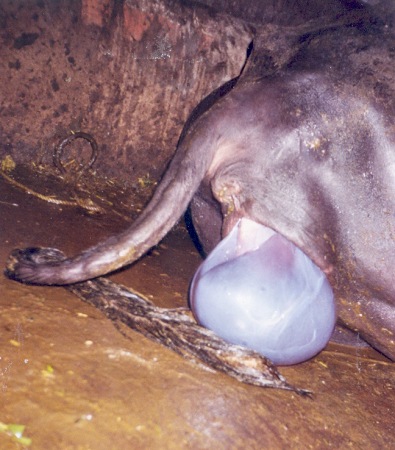
Onset of Labor.
As the outer membrane (allantois) ruptures the second stage of labor begins. The allantois cannot stretch very far due to its attachment to the caruncles. Next the intact amnion appears and the cow is actively straining.
Tiwari RP (2008)
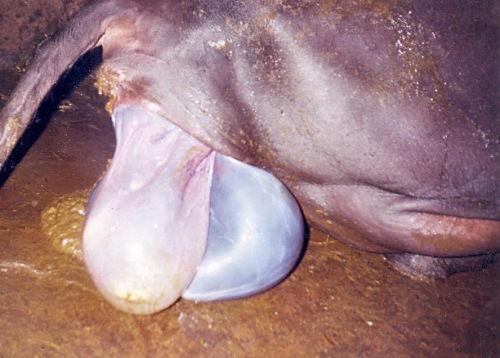
Allantois and Amnion.
The empty allantoic membrane, on top, and the intact amniotic sac, underneath to the right, are both presented. The calf is in the birth canal.
Tiwari RP (2008)
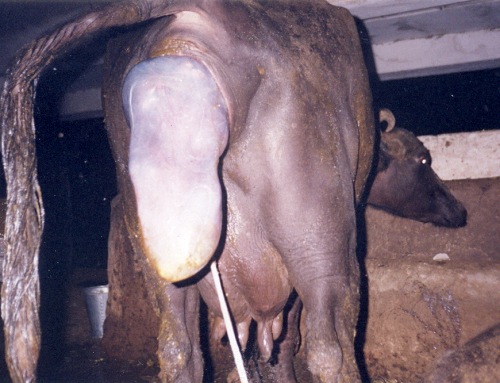
Fetal Head and Limbs.
The fetal head and limbs, still contained within the amnion, are showing. Some cows get up and lie down several times, this may help in positioning the calf, but is generally not required.
Tiwari RP (2008)
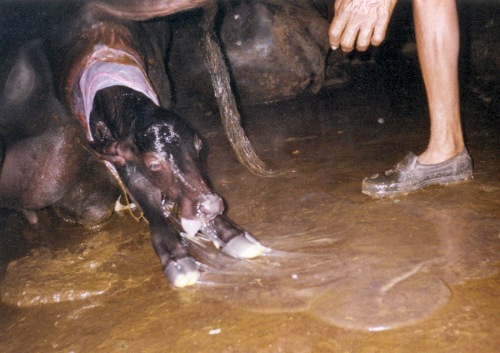
Rupture of the Amnion.
As the amnion ruptures the calf is expelled further. The viscous amniotic fluid provides lubrication. Cleanliness and lubrication are important. As in this instance, the dam sometimes defecates during the process of calving, and contaminates the environment.
Tiwari RP (2008)
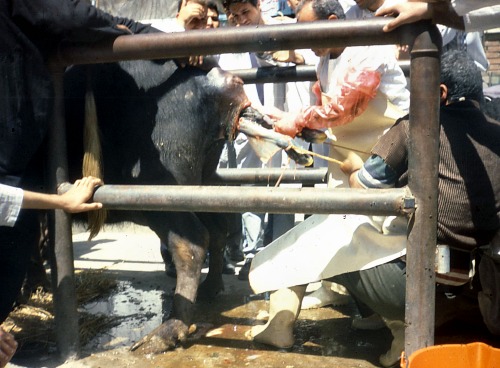
Downward Traction.
Anterior presentation. The nose of the calf is visible. Downward traction conforms to the anatomy of the birth canal. Delivery with the cow in lateral recumbency is the preferred method.
El Naggar MA (2005)
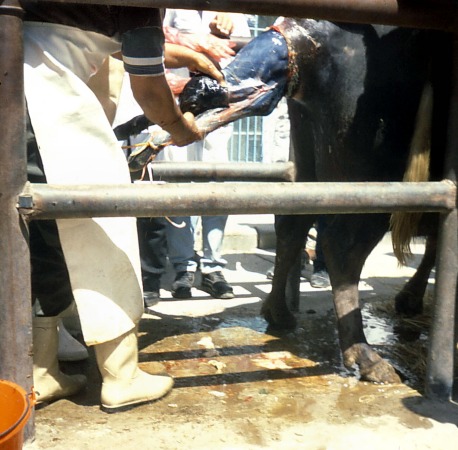
Prevention of Hiplock.
After the head has been delivered, the calf should be rotated to facilitate the passage of the hips of the calf through the maternal pelvis. Delivery with the cow in lateral recumbency is the preferred method.
El Naggar MA (2005)
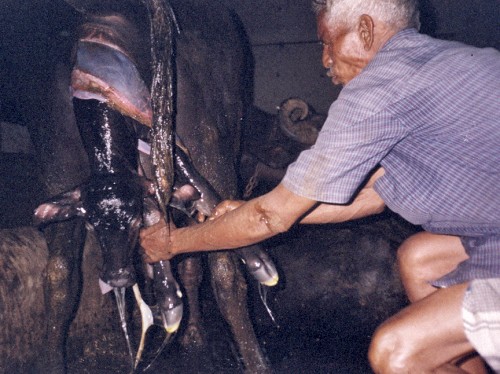
Manual Traction.
Expulsion of the calf is not as efficient when the cow is standing, and assistance may be required when progress is slow.
Tiwari RP (2008)
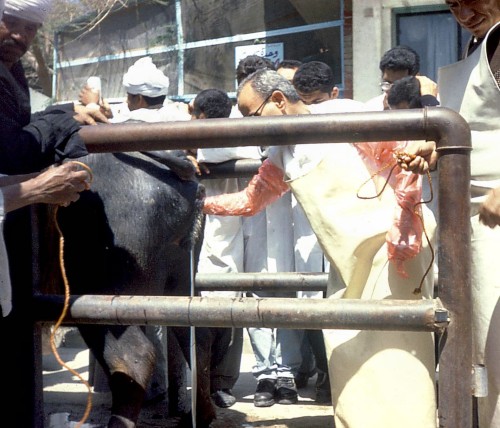
Attaching the Ropes.
Expulsion of the calf is not as efficient when the cow is standing. To assist ropes or obstetrical chains are attached to the feet.
El Naggar MA (2005)
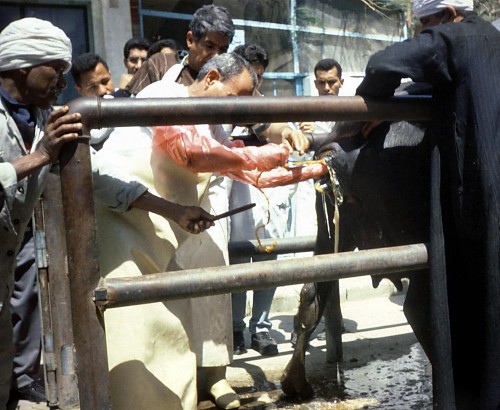
One Foot Showing.
The hoof of one foot is showing below the arm of the obstetrician.
El Naggar MA (2005)
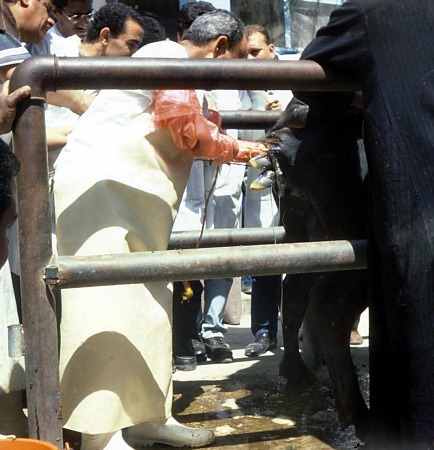
Both Feet Showing.
Both front feet are showing and the legs are extended.
El Naggar MA (2005)
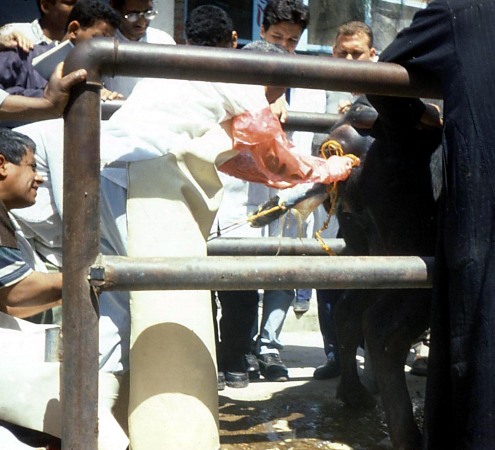
Downward Traction.
As the head approaches the vulva, traction is directed downwards.
El Naggar MA (2005)
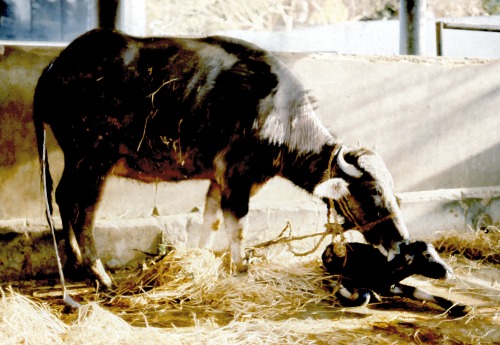
Delivery Complete.
The mother usually licks the calf. The rough tongue will stimulate respiration.
El Naggar MA (2005)
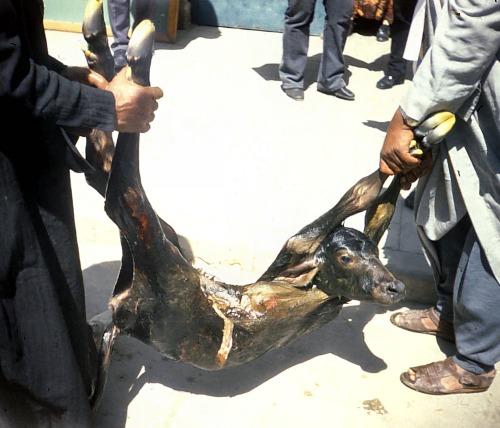
Neonate.
After the calf has been delivered it should be moved to a safe place to make sure it is breathing.
El Naggar MA (2005)
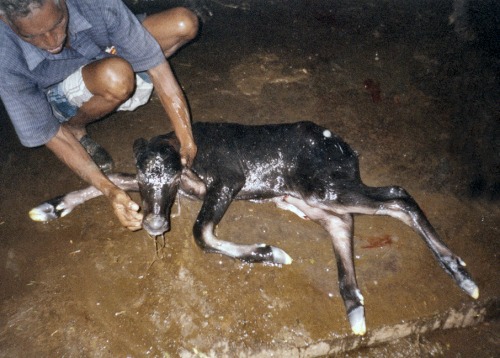
Initiation of Respiration.
As soon as the calf is delivered, it must begin to breathe. The nostrils are cleared, the neck is extended, the tongue is pulled forward, and the calf is placed in sternal recumbency.
Tiwari RP (2008)
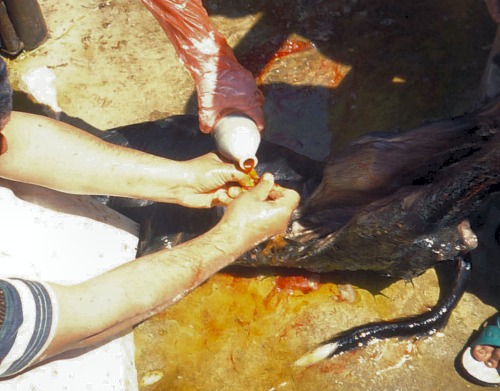
Treating the Umbilical Cord.
After the calf has begun to breathe, the umbilical cord should be treated with tincture of iodine.
El Naggar MA (2005)
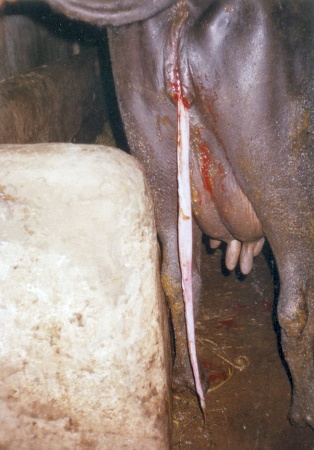
Delivery of the Fetal Membranes.
A long strand of amnionic membrane is hanging from the vulva. The placenta is normally expelled within 6 hours after parturition. If not delivered by 12 hours post partum, the membranes are considered retained.
Tiwari RP (2008)
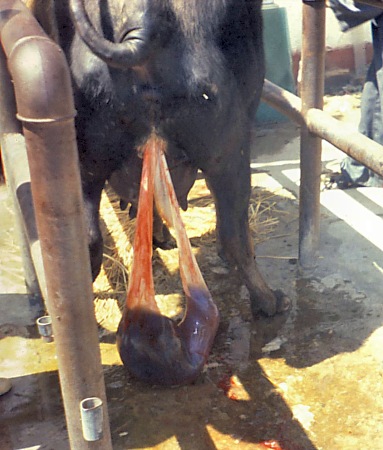
Fetal Membranes.
The fetal membranes are filled with blood tinged fetal fluids. The placenta is normally expelled within 6 hours after parturition. If not delivered by 12 hours post partum, the membranes are considered retained.
El Naggar MA (2005)
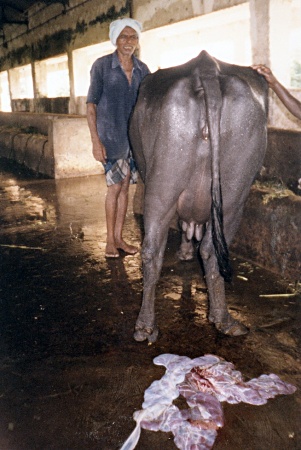
Stage 3 Complete.
Stage 3 is considered complete when both sets of fetal membranes (allantois and amnion) have been delivered.
Tiwari RP (2008)
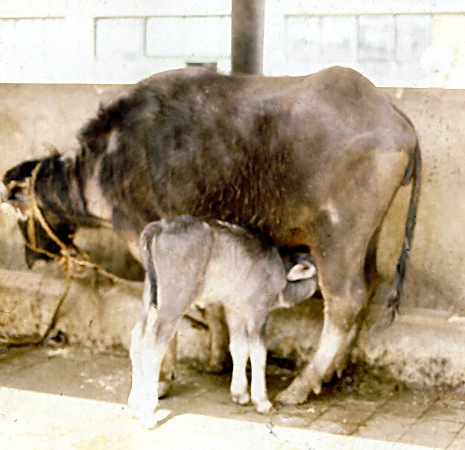
Colostrum.
It is important that the calf gets colostrum within two hours after delivery.
El Naggar MA (2005)
